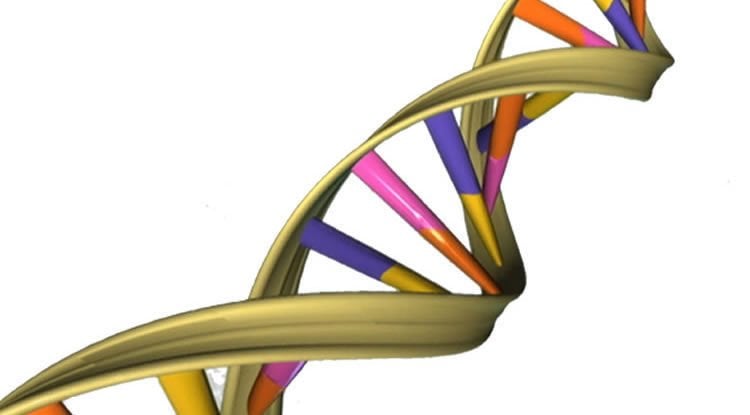Summary: Researchers report functional alterations in L-type calcium channels were detected in models of Fragile X syndrome.
Source: University of Helsinki.
Disorders of the autistic spectrum have been associated with hundreds of genetic variations, which have helped in identifying disturbed intracellular signalling pathways and molecular mechanisms typical to autism.
Many gene mutations related to the autism spectrum disorders reside in a gene that produces a protein relevant to synapses, or is important for the connections between neurons. Gene defects linked with developmental disorders are often located in genes involved in brain development.
In a study recently published in the Stem Cell Reports journal, researchers from the University of Helsinki examined molecular mechanisms leading to disturbed neuronal network function in autistic spectrum disorders by utilising patient-specific neuronal progenitors differentiated from stem cells induced from blood or fibroblasts of skin. Functional changes in the voltage-dependent L-type calcium channels were detected in fragile X syndrome (FraX), the disease model used in the study.
FraX is the most common cause of genetic mental retardation and a variant of the autistic spectrum.
“In genetic studies, the L-type calcium channels have been previously linked with autism, and a dysfunction in the channels aptly connects the changes identified in genetic studies to abnormalities of neural network formation and function in autistic spectrum disorders,” says Maija Castrén, an Academy of Finland research fellow at the University of Helsinki,

The new research finding increases our understanding of the developmental disorders of the nervous system and provides an opportunity for further research, which can help in identifying the factors that individually increase or decrease vulnerability to defects of neuronal connectivity underlying autistic spectrum disorders and its co-morbid neuropsychiatric diseases.
“Even though functional changes are clearly expressed in similar manner in relation to distinct neurodevelopmental disorders, in human neural progenitor cultures there are a lot of individual variations that presumably regulate the effects of each gene mutation on the individual phenotype,” Castrén elaborates.
Source: Maija Castrén – University of Helsinki
Publisher: Organized by NeuroscienceNews.com.
Image Source: NeuroscienceNews.com image is in the public domain.
Original Research: Open access research for “Increased Calcium Influx through L-type Calcium Channels in Human and Mouse Neural Progenitors Lacking Fragile X Mental Retardation Protein” by Claudia Danesi, Venkat Swaroop Achuta, Padraic Corcoran, Ulla-Kaisa Peteri, Giorgio Turconi, Nobuaki Matsui, Ilyas Albayrak, Veronika Rezov, Anders Isaksson, and Maija L. Castrén in Stem Cell Reports. Published November 29 2018.
doi:10.1016/j.stemcr.2018.11.003
[cbtabs][cbtab title=”MLA”]University of Helsinki”Genetic Background of Autism Connected to Stem Cell Dysfunction.” NeuroscienceNews. NeuroscienceNews, 3 December 2018.
<https://neurosciencenews.com/asd-stem-cell-120196/>.[/cbtab][cbtab title=”APA”]University of Helsinki(2018, December 3). Genetic Background of Autism Connected to Stem Cell Dysfunction. NeuroscienceNews. Retrieved December 3, 2018 from https://neurosciencenews.com/asd-stem-cell-120196/[/cbtab][cbtab title=”Chicago”]University of Helsinki”Genetic Background of Autism Connected to Stem Cell Dysfunction.” https://neurosciencenews.com/asd-stem-cell-120196/ (accessed December 3, 2018).[/cbtab][/cbtabs]
Abstract
Increased Calcium Influx through L-type Calcium Channels in Human and Mouse Neural Progenitors Lacking Fragile X Mental Retardation Protein
The absence of FMR1 protein (FMRP) causes fragile X syndrome (FXS) and disturbed FMRP function is implicated in several forms of human psychopathology. We show that intracellular calcium responses to depolarization are augmented in neural progenitors derived from human induced pluripotent stem cells and mouse brain with FXS. Increased calcium influx via nifedipine-sensitive voltage-gated calcium (Cav) channels contributes to the exaggerated responses to depolarization and type 1 metabotropic glutamate receptor activation. The ratio of L-type/T-type Cav channel expression is increased in FXS progenitors and correlates with enhanced progenitor differentiation to glutamate-responsive cells. Genetic reduction of brain-derived neurotrophic factor in FXS mouse progenitors diminishes the expression of Cav channels and activity-dependent responses, which are associated with increased phosphorylation of the phospholipase C-γ1 site within TrkB receptors and changes of differentiating progenitor subpopulations. Our results show developmental effects of increased calcium influx via L-type Cav channels in FXS neural progenitors.







